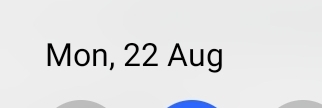
In News
- India and Iran signed a Memorandum of Understanding (MoU) for the smooth movement of seafarers between both countries.
More about the news
- MoU and the International Convention:
- The Memorandum of Understanding (MoU) is signed on recognition of Certificates of Competency in Unlimited Voyages.
- It aims to help seafarers from both countries as per the provisions of the International Convention on Standards of Training, Certification and Watchkeeping for Seafarers (1978).
- Chabahar Port:
- The role of Chabahar as a trade multiplier for the region was highlighted during the event as the potential of the port to act as a swift, economical trade conduit between Central Asia and South Asia, and even South East Asia, remains to be tapped fully.
- Shahid Behesti Terminal:
- Shahid Behesti Port is likely to act as a catalyst to unlock the huge trade potential in the region.
- For India, the Shahid Behesti terminal of Chabahar Port is a crucial cog in the potentially game-changing International North-South Transport Corridor (INSTC).
- Significance:
- The seafarer agreement is the first tangible development after years of dormancy owing to the unfulfilled potential of the port and Covid-related restrictions.
|
Chabahar Port
International North-South Transport Corridor (INSTC)
|
India-Iran Relations
- Historical:
- India-Iran relations span millennia marked by meaningful interactions.
- The two countries shared a border till 1947 and share several common features in their language, culture and traditions.
- Political relations:
- India and Iran signed a friendship treaty on March 15, 1950.
- Tehran Declaration:
- Prime Minister Shri Atal Bihari Vajpayee visited Tehran in 2001 and signed the “Tehran Declaration” which set forth the areas of possible cooperation between the two countries.
- It recognised then Iranian President Mohammad Khatami’s vision of a “dialogue among civilisations” as a paradigm of international relations based on principles of tolerance, pluralism and respect for diversity.
- The New Delhi Declaration:
- In 2003, both sides signed “The New Delhi Declaration” which set forth the vision of a strategic partnership between India and Iran.
- Security:
- Both India and Iran also consult each other on security matters.
- There are regular bilateral exchanges at the level of National Security Advisors and Deputy National Security Advisors.
- Economic and Commercial Relations:
- India-Iran commercial ties were traditionally dominated by the Indian import of Iranian crude oil.
- The bilateral trade during 2019-20 was $4.77 billion, a decrease of 71.99% as compared to the trade of $17.03 billion 2018-19.
- India’s major exports to Iran:
- It includes rice, tea, sugar, soya, medicines/pharmaceuticals, man-made staple fibres, electrical machinery, etc.
- Major imports from Iran:
- It includes inorganic/organic chemicals, fertilisers, cement clinkers, fruits and nuts, leather, etc.
- Connectivity:
- During the visit of Prime Minister Shri Narendra Modi to Tehran in May 2016, the contract on the Shahid Beheshti port of Chabahar was signed which, inter-alia, comprises investment of $85 million for procuring equipment of the port.
- The contract also comprises the provision of a line of credit of approximately USD 150 million for the development of the port.
- After operations began at the Chabahar port in December 2018, the port handled more than 8200 TEUs and 1.28 million tonnes of bulk cargo.
- During the visit of Prime Minister Shri Narendra Modi to Tehran in May 2016, the contract on the Shahid Beheshti port of Chabahar was signed which, inter-alia, comprises investment of $85 million for procuring equipment of the port.
- Humanitarian Assistance:
- India has also helped Iran in times of natural disasters and health emergencies.
- India delivered aid that included PPE kits and PCR machines to Iran in April 2020 during the COVID-19 crisis.
- India provided 40,000 litres of Malathion 96% ULV pesticides to Iran via Chabahar port in a concerted effort to mitigate locust threat to agriculture and enhance food security in the region.
- India has also helped Iran in times of natural disasters and health emergencies.
- Cultural Relations:
- An Indian Cultural Centre in Tehran was inaugurated in 2013.
- The Cultural Centre was renamed the Swami Vivekananda Cultural Centre (SVCC) in 2018 and was provided with separate premises in 2019.
- The International Day of Yoga was organised in 2018, 2019 and 2020.
- The 550th Birth Centenary of Sri Guru Nanak was also observed.
- The centre conducts regular Yoga and Hindi classes.
- An Indian Cultural Centre in Tehran was inaugurated in 2013.
- People-to-people contacts:
- There is a high level of commitment in both countries to promote and facilitate people-to-people contacts.
- Indian pilgrims visit the Shi’a pilgrimage circuit in Iran (Qom, Mashhad, Hamedan) and Iraq (Najaf and Karbala) every year.
|
International Convention on Standards of Training, Certification and Watchkeeping for Seafarers (STCW), 1978
|
Source: TH
Previous article
Cloudburst & Flash Floods
Next article
India’s first observatory to monitor space activity